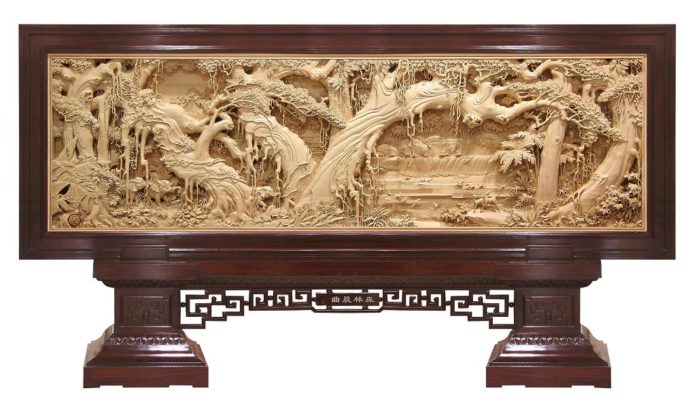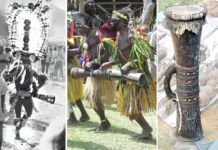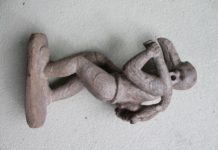In terms of application and decoration, wood carving can be divided into three categories: building carving, furniture carving and display artwork carving. According to form of expression, there is hollowed-out carving, relief carving, base-relief carving, three-dimensional circular carving and hollowed-out appliqué. Due to diversity of timber texture, wood carvings can be classified as hard wood carving and soft wood carving. In general, firm trees with finer texture are used for carving, such as nanmu, red sandalwood, camphorwood, cedarwood, gingko, agilawood, rosewood and longan. Root engravings in natural form are call “root carvings”.
Furniture decorated with wood carving has a sense of primitive simplicity and elegance. Artistic carved furniture and rosewood carved furniture exported by China are antique and elegant, with exquisite carving and unique oriental national style. Carved furniture is popular in Jiangsu, Zhejiang, Hunan, Jiangxi, Fujian, Guangdong, Shanghai, Beijing and other places. Rosewood carved furniture produced in Taiwan are also distinctive.
Wood carving artwork can be divided into wood carving display artwork with pure ornamental value and practical wood carving artwork. Modern wood carving display artwork is manifested in different themes such as flower, bird, beast and maiden.
China has a wide range of wood carving distributed across the country. Zhejiang Dongyang wood carving, Guangdong gold lacquer wood carving, Wenzhou boxwood carving, and Fujian longan wood carving are the most famous ones and known as “four honored carvings”. Other varieties of wood carvings like Qufu pistacia chinensis carving, Nanjing antique finished wood carving, Suzhou rosewood carving, Jianchuan wood carving, Shanghai whitewood carving, Yongling birch wood carving, Quanzhou colored wood carving are famous for their places of origin, material selection or technology features. As Chinese wood carvings are distributed widely, they rise and decline one after another.
Due to differences in local folk customs, cultures, resources, conditions, materials selected, and technologies, numerous factions with strong local characteristics and unique merits are developed. The national masters are too numerous to mention one by one in each region. For example, Lu Guangzheng, Gao Gongbo, Feng Wentu, Yu Jinshun and Huang Xiaoming from Zhejiang, Lin Xueshan, Fang Wentao, She Guoping and Huang Quanfu from Fujian and Ke Yumin from Chongqing, as leaders in their fields, are national wood carving masters and have established their own studios in various places to pass on technical skills to their apprentices.





